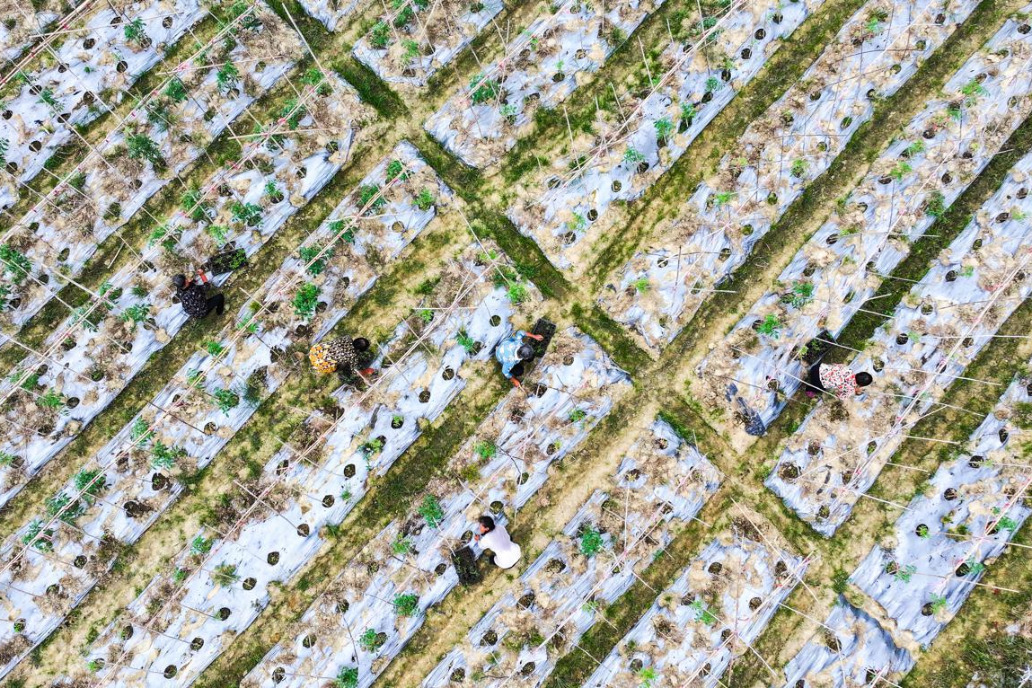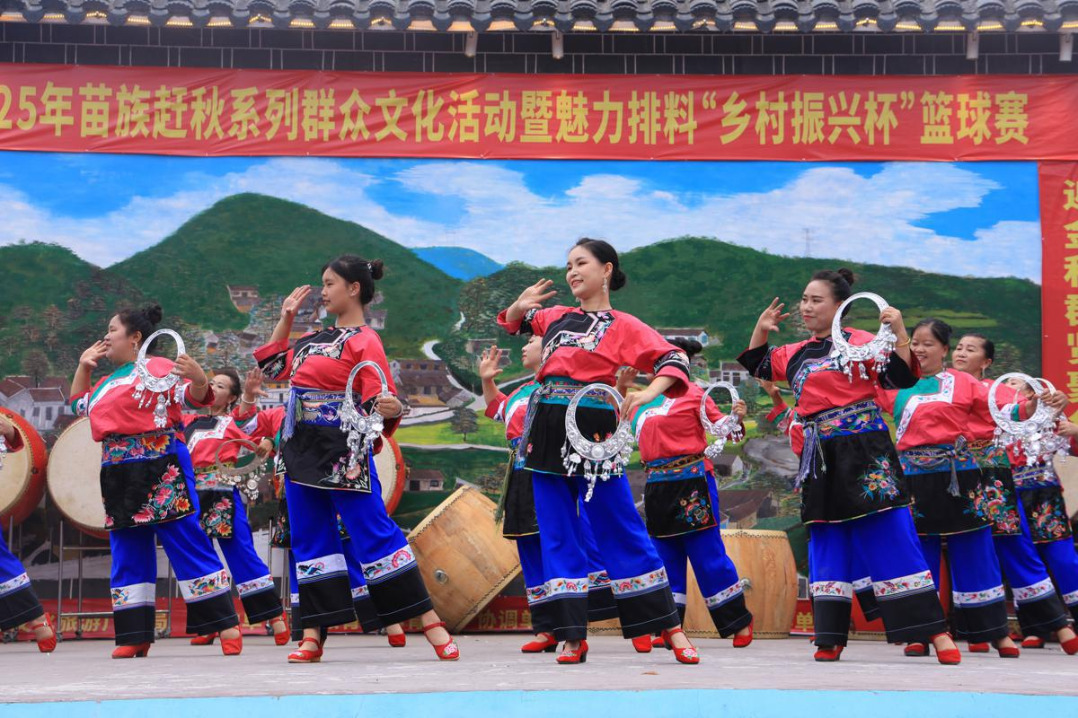Xinjiang fishery helps meet growing demand for seafood
Inland breeding base able to produce quality grouper and white shrimp


The saline-alkali land found in Alaer city of the Xinjiang Uygur autonomous region is being used to raise fish and shrimp, feeding the demand for seafood in China and reducing the country's dependence on imported products.
At a breeding base at Jinyang town in Alaer, Huang Guang, an agricultural technician, checks South American white shrimp and grouper at the pond.
"The pH level of the saline-alkaline water is around 8.0, which is suitable for the growth of sea fish and shrimp. We also added trace elements into the water to make the environment more similar to that of the ocean," he said, adding that the elements are edible and pose no harm to human health.
In March last year, Huang and his colleagues succeeded in raising South American white shrimp at the base and began trials for breeding grouper in May this year.
"Our shrimp sells especially well. The taste and quality are similar to seafood from the ocean," he said.
Huang said he was initially unaware of Xinjiang's high-quality saline-alkaline water and doubted the feasibility of fish and shrimp farming there.
The results have surpassed their expectations, he added.

Saline-alkaline land is considered less productive in growing crops, and the breeding base can make better use of the land and boost local incomes, according to Huang.
He added they recycle water and don't release used water elsewhere for environmental protection.
The fertilizer produced during breeding can also be reused, which is a sustainable development model.
Looking toward the future, Huang believes inland fish and shrimp farming can benefit all.
"I hold high hopes for Xinjiang to enhance its production of superior seafood in the years to come."
The base, with a total investment from Longda Aquaculture Farmers Cooperative of 10 million yuan ($1.41 million), has raised more than 5,000 pearl gentian grouper and 2.3 million prawn.
With an area of 9.8 hectares, it has 15 greenhouses with 360 ponds inside.
The program receives scientific support from Tarim University in Alaer and Zhejiang University in Hangzhou, Zhejiang province.
Peng Renkai, who is in charge of the cooperative, said it takes 3 months for South American white shrimp to reach a marketable size, and 6 months for grouper.
Currently, the shrimp sells for 120 yuan per kilogram, while grouper goes for 150 yuan per kg.
From January to September, approximately 30 metric tons of shrimp and 10 tons of grouper were sold, he said.

Shu Miao'an, an aquaculture expert from Zhejiang University, said the saline-alkali water there lacks certain trace elements, which are supplemented as needed. The cost of adding these elements — mainly calcium, magnesium and potassium ions — is not high.
"Xinjiang's saline-alkali land has a composition different from other saline-alkali lands," he said.
He added the main focus is expanding the scale of breeding. Now they mainly sell in Aksu area.
"The goal is for Xinjiang to become a significant region for future seafood aquaculture. Xinjiang has great development prospects in this regard," he said.
Though far from the ocean, Xinjiang's locally produced seafood is gaining traction, with many areas developing the industry.
The town is located at the northwestern edge of the Taklimakan Desert. There are 286 hectares of saline-alkali waters that belong to a national protected area.
Last year, the town started developing aquaculture in salinealkali water. They experimented with farming tilapia, perch and prawn.
Currently, there are six aquatic farming cooperatives and enterprises. They have already released 414,000 fish of eight species, 305,000 green crabs and 4.8 million South American white shrimp, with 15 tons of shrimp already on the market.
Mao Weihua contributed to this story.
Contact the writers at chenmeiling@chinadaily.com.cn
- China launches low Earth orbit satellite group
- China successfully launches new test satellite
- Books of Xi's discourses on adhering to deepening reform comprehensively published
- China activates Level-IV emergency flood-control response in Hainan
- Flash flood leaves eight campers dead and four missing
- Helsinki spotlight for Beijing school's AI project




































